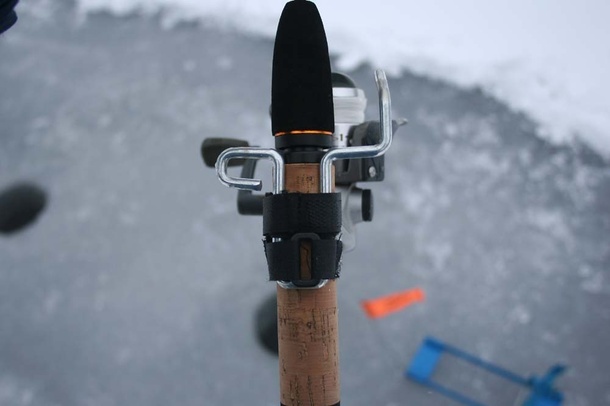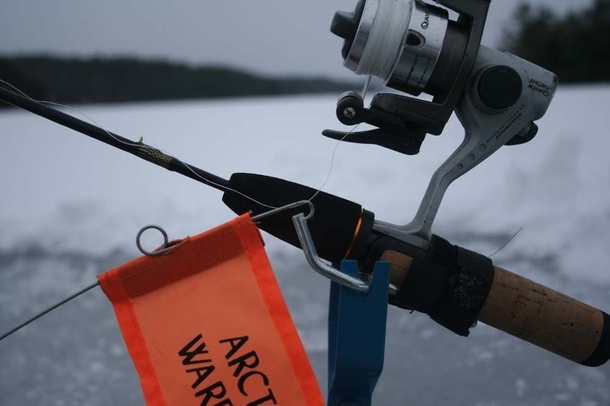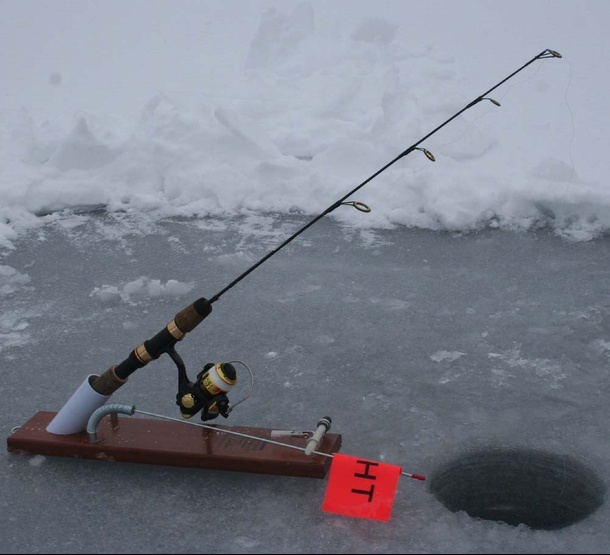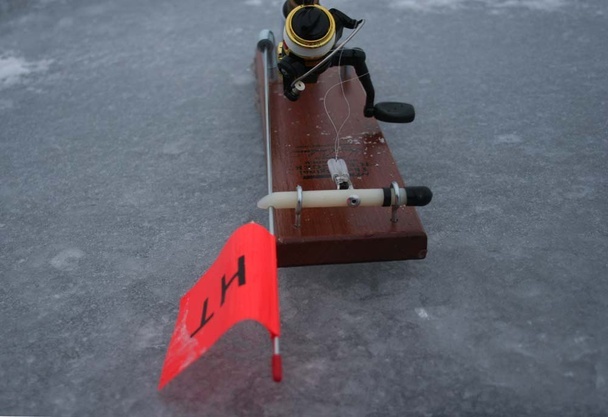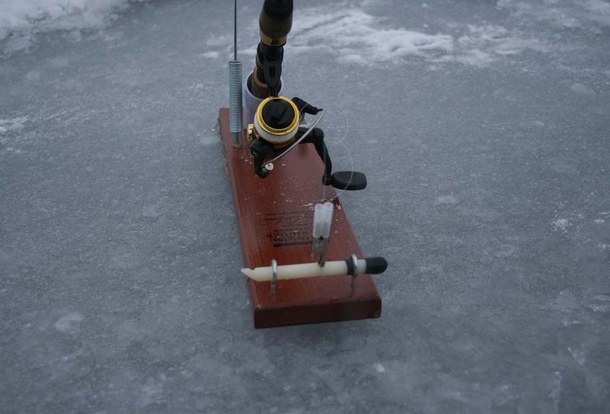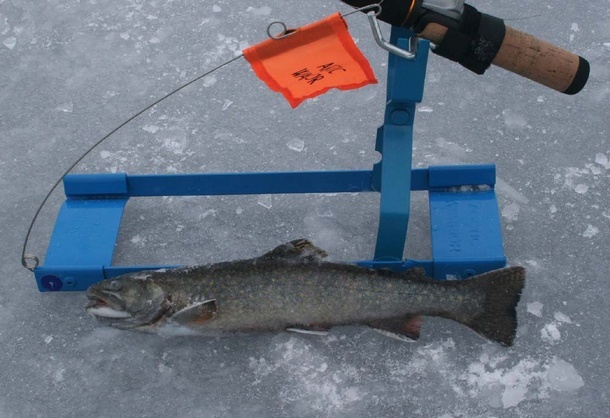Like many northern New England ice anglers, most of my hard water fishing has historically been done primarily with tip-ups. For those of you completely unfamiliar with ice fishing, a tip-up (often called a trap here in Maine) is essentially a spool of line rigged to a spring loaded flag. The tip-up is placed in a hole in the ice with its spool just below the surface of the water. When a fish grabs the baited hook that is presumably attached to the spool of line, the flag is released alerting the angler of the strike. The fish then must be pulled by hand to the surface.
While this method of icing fish is efficient as well as tried and true, it’s not without its drawbacks. For example, a fish is likely going to pull a lot of line from the spool before the angler even reaches his or her tip-up. As the angler pulls in the fish, this line is probably going to pile up on the ice next to the hole, freezing into an icy rat’s nest that sometimes can’t be untangled. Additionally, and this is just a matter of personal opinion, fighting a fish by way of rod and reel is more fun than hand-lining it in.
The obvious alternative to the tip up is some sort of jigging rod setup, but managing multiple jigging rods can be tricky. An angler may not notice a strike on a jigging rod that is set up 50 feet away.
There are now a variety of products on the market that attempt to bridge the gap between the tip-up and the jigging rod. The two that are the subject of this article are the Arctic Warrior tip-up offered by the Clam Corporation and the Ice Rigger rod tender offered by HT Enterprises. Both devices are designed to connect a standard jigging rod to a spring loaded signal flag in order to allow an angler to simultaneously take advantage of the best qualities of the tip-up and the jigging rod.
What follows is my initial assessment of each device based on how they performed during my first ice fishing trip of the 2012 season.
How it works in theory: the Arctic Warrior
1.
The Arctic Warrior essentially consists of two parts; a collapsible metal base with attached flag and a metal bearing attachment that affixes to a rod handle with two Velcro straps.
2.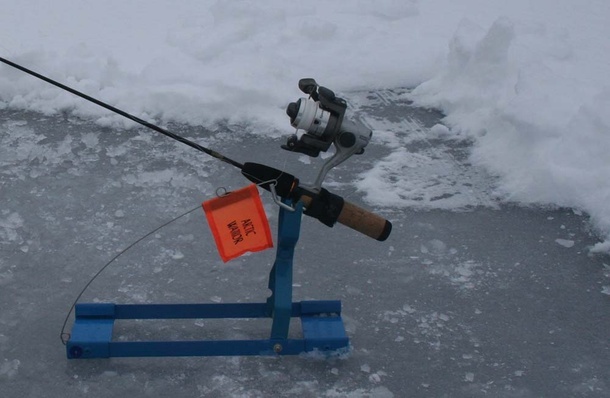
With the reel oriented as pictured above, the metal attachment is placed into the base. To balance the rod in the cradle, move the bearing back and forth along the rod handle until the rig is appropriately balanced. This is best accomplished indoors prior to taking to the ice.
3.
After setting the line at the desired depth, the Arctic Warrior is set by hooking the flag into the metal attachment as pictured above. The device works with the bail of the reel either open or closed. To use the Arctic Warrior with the bail open, run the line through the hooked part of the flag. When a fish takes the bait, the rod rocks downward, releasing the flag.
So far, the weakest point in the design seems to be the metal part that attaches to the rod handle. It will not secure to all rod handles (straight, even handles work best) and the small, metal attachment seems like it would be fairly easy to lose.
How it works in theory: the Ice Rigger
1.
The ice rigger, pictured above, is somewhat easier to set up than the Arctic Warrior and consists of a PVC rod holder, a flag, and quick release clip attached to a Teflon bearing.
2.
To use the device, place the rod into the holder and set the bait to the desired depth. With the bail of the reel open, affix the clip to the line as pictured above. The flag is then set into a notch in the bearing.
3.
When a fish takes the bait, the bearing rolls forward, releasing the flag. The line also pulls free of the clip. The amount of tension require for the line to release from the clip can be increased by moving the line farther back in the clip.
How they worked in practice
I didn’t get a single hit on the Ice Rigger during my recent trip so its effectiveness is yet to be determined.
I did, however, have two hits on the Arctic Warrior setup and so far, it seems to work as advertized. I botched the first strike of the day when I attempted to set the hook without first de-icing the hole. I was a little more patient and managed to land a twelve-inch brook trout.
Overall, I’m so far encouraged by the results. However, there is still some streamlining of the setup to be done. I need to find a way to prevent my reels, rod eyes, and the ice holes themselves from freezing. Keeping the holes free of skim ice is pretty much a full time job on extremely cold days. I have read that applying a few drops of unscented mineral oil to line spools and guides can inhibit freezing, but keeping holes open is going to require some creative thinking. (2093)

